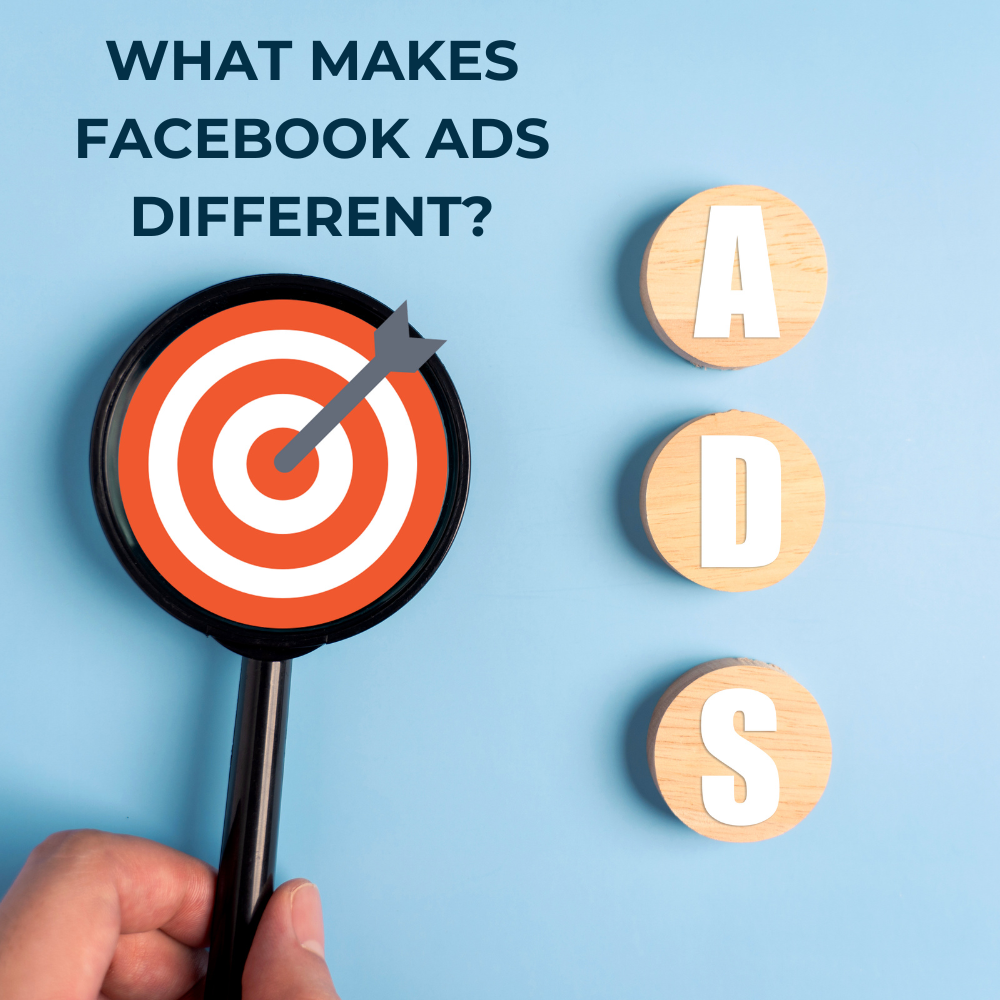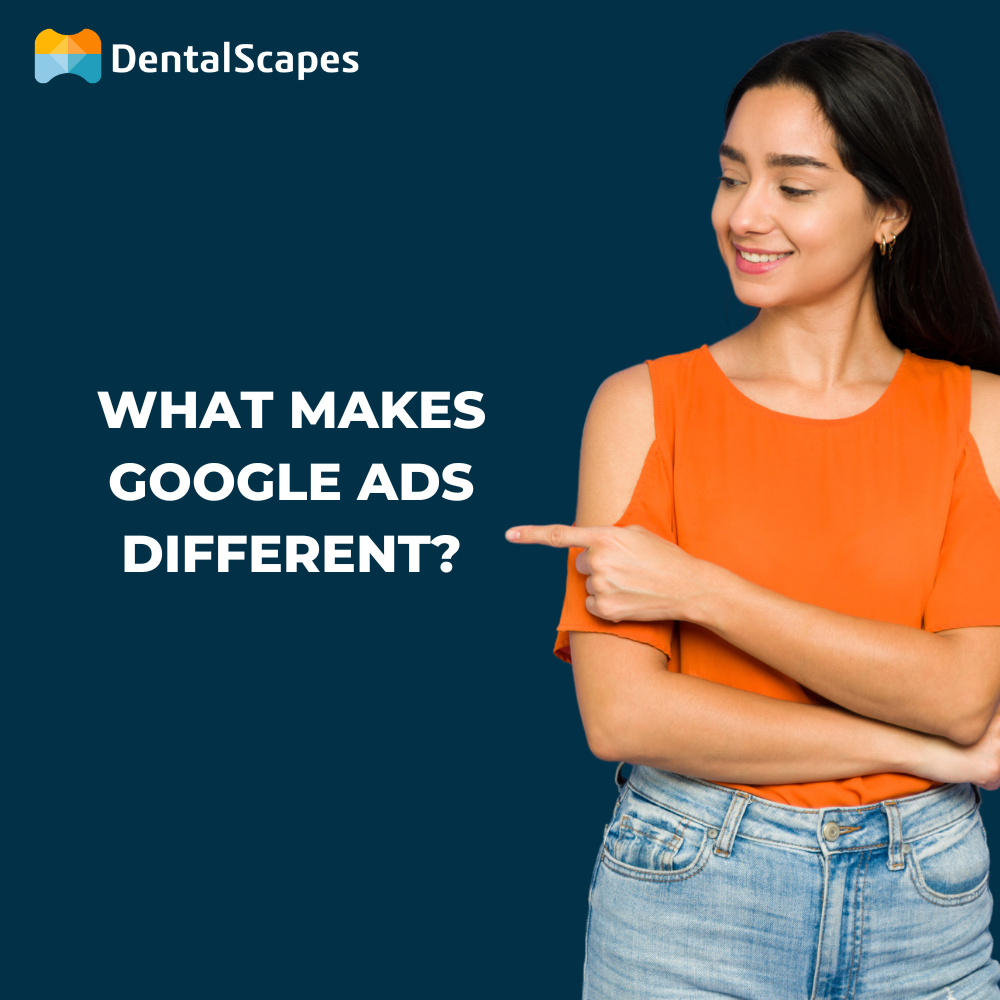Online advertising is an essential component of any successful marketing strategy. Dental and orthodontic practices, in particular, can benefit from targeted online ads to attract new patients and grow their business. However, a common dilemma faced by many dental and ortho practitioners is choosing between Facebook Ads and Google Ads.
Both platforms offer unique advantages and can be highly effective when paired with the right strategy. In this blog post, we’ll dive into how Facebook and Google ads work, their differences, the pros and cons of each platform, and potential costs.
How Do Facebook Ads and Google Ads Work?
Facebook Ads and Google Ads, while similar in many respects, are nonetheless very different ad products. Depending on your practice’s market, budget, and objectives, one or both platform(s) may be right for you.
Let’s take a look at the fundamentals of each platform:
Facebook Ads

Facebook Ads operate within the Meta ecosystem, which includes Facebook, Instagram, and Messenger. Within the Facebook Ads Manager, you can create campaigns targeting specific demographics, interests, behaviors, and locations. This can be useful when you’re trying to attract a specific type of patient to your practice. For example, you can use Facebook Ads’ sophisticated options to target parents with young children living within 10 miles of your office, or young professionals employed by a specific company in your area. The possibilities are endless.
Facebook Ads can be displayed in various formats such as images, videos, and carousels.. Facebook’s powerful algorithm ensures that ads are shown to users who are most likely to engage with them based on their online activity.
Depending on your objectives, Facebook Ads can be run on a cost-per-click (CPC) or cost-per-impression (CPM) model. With a CPC campaign, you pay each time a user clicks on your ad and visits your website. With a CPM campaign, you pay per thousand impressions, or views, of your ad. Impression-based campaigns are typically better suited for raising brand awareness and can be especially useful when opening a new practice. CPC campaigns, on the other hand, are best when trying to drive traffic to your website.
What Makes Facebook Ads Different
- Audience Targeting: Facebook provides detailed targeting options based on user demographics, interests, behaviors, and more.
- Low-Intent: Unlike Google Ads (see below), Facebook Ads are low-intent, meaning that typically, users aren’t on Facebook or Instagram seeking a dentist. Nevertheless, Facebook’s sophisticated targeting options mean there are many opportunities to convert new patient appointments.
- Visual Engagement: Facebook Ads are highly visual, allowing practices to use images and videos to capture attention.
- Social Proof: Ads can show likes, shares, and comments, providing “social proof” and building trust.
- Cost: With Facebook Ads, you have significant control over how much (or how little) you spend, and, in general, Facebook Ads are less expensive than Google Ads.
Google Ads

Google Ads operate on a pay-per-click (PPC) model where advertisers bid on specific keywords related to their services. For instance, you might bid on terms like “Louisville dentist,” “Invisalign orthodontist,” or “dental implant.” These PPC ads appear on Google’s search results pages, typically above the “organic,” or non-paid, search results.
The primary goal of PPC Google Ads is to capture users actively searching for specific information or services. Ad formats include text-based ads, Google Maps ads, and click-to-call ads.
Dental and ortho practices also have the option to leverage pay-per-impression (CPM) campaigns via partner websites through the Google Display Network.
NOTE: Google also offers Local Services Ads (LSAs), which are a pay-per-lead (PPL) ad product. LSAs are pretty different than “traditional” Google Ads, and we’ve got an entire blog post about them over here if you’re interested.
What Makes Google Ads Different
Search Intent: PPC Google Ads targets users who are actively searching for specific services. Marketers often refer to Google ad leads as “warm” or “hot,” given their propensity to convert.
Keyword Targeting: Advertisers bid on relevant keywords to appear in search results, reaching potential patients at the right moment. In general, the more you’re willing to bid, the more frequently and prominently your ads will appear on the Google search results page.
Wide Reach: Google’s extensive network allows ads to be displayed across millions of websites and apps.
Cost: In general, Google Ads are much more expensive than Facebook Ads, in part because they are aimed at users actively searching for services and therefore more likely to convert.
Pros and Cons of Google Ads and Facebook Ads
Facebook Ads
Pros
- Advanced Targeting: With Facebook Ads, dental practices and orthodontists can target specific demographics, interests, and behaviors, ensuring ads are shown to the right audience.
- Cost-Effective: In general, Facebook Ads have a lower cost-per-click (CPC) compared to Google Ads, making them more budget-friendly.
- Engagement: Highly visual ads can engage users and encourage interaction through likes, shares, and comments, generating “social proof” that builds trust in your practice.
- Brand Awareness: Facebook Ads are great for building brand awareness and reaching a broader audience, which can be especially helpful for startup practices or those undergoing a rebrand.
Cons
- Lower Intent: Users are generally not actively searching for dental or orthodontic services on Facebook and Instagram, leading to lower conversion rates.
- Ad Fatigue: Users can become desensitized to ads that run repeatedly, leading to decreased engagement and higher costs over time. With Facebook Ads, your ad creative and copy must be frequently swapped out.
- Complexity: While Facebook Ads can be run in-house, they generally require a deep understanding of targeting options and ad formats to create effective campaigns. In most cases, you’ll want to partner with a dental marketing agency or ortho marketing company familiar with them.
Google Ads
Pros
- High Intent: Google Ads target users actively searching for dental services and orthodontic treatment, resulting in higher conversion rates.
- Immediate Results: Because they’re so focused on high-intent searches, Google Ads can generate immediate traffic and leads as soon as campaigns are launched.
- Flexibility: Across both Google search ads (PPC ads) and the Google Display Network (CPM ads), a wide range of ad formats and targeting options gives dental practices and orthodontic practices a lot of flexibility in customizing their campaigns.
Cons
Cons
- Higher Costs: Google Ads generally have higher cost-per-click (CPC) compared to Facebook Ads, leading to increased costs.
- Competitive: High competition for popular keywords (e.g., “Invisalign” and “dental implants”) can drive up costs and require higher bids. This is especially true as smaller practices are forced to compete with DSOs and OSOs with bigger marketing budgets.
- Complex Setup: Google Ads requires careful keyword research and management to avoid wasted ad spend and maximize ROI. In most cases, you’ll want to partner with a dental marketing agency that knows what they’re doing.
Cost-Per-Acquisition (CPA)
Cost-per-acquisition, or CPA, measures how much it costs to generate a new patient appointment with an online ad. CPA can sometimes vary greatly between Facebook Ads and Google Ads and depends largely on how the campaigns are set up and optimized.
Facebook Ads CPA
The average CPA for Facebook Ads can vary widely depending on factors such as targeting, ad quality, specific service, and competition. On average, dental practices might expect a CPA ranging from $50 to $150, and you’re going to pay more for higher-end procedures like implants and Invisalign. For ortho practices, CPA is typically higher, maybe $100-210 for a new patient. Of course, your CPA will ultimately also depend on how effective you are at converting phone calls and consultations.
When running a brand awareness campaign, Facebook Ads can be more cost-effective, but conversions might be lower compared to Google Ads due to users’ lower intent.
Google Ads CPA
Google Ads typically have a higher CPA due to the competitive nature of keyword bidding and users’ high intent. For dental practices, the average CPA can range from $80 to $220. For orthodontists, that number might be $200+. Despite the higher costs, the increased likelihood of converting search users into patients and the ability to target specific keywords often justifies the investment.
When Should Dentists and Orthodontists Consider Online Advertising?
Effective online advertising campaigns, such as on Google or Facebook, and Instagram, can be a game-changer for dental practices. But whether or not to run a campaign will depend on your practice’s market, budget, and objectives.
Here are just a few considerations when deciding whether to run online ads for your dental practice:
Immediate Results vs. Long-Term SEO Strategy
Immediate Results
Online advertising, particularly through Google Ads and Facebook Ads, can deliver immediate results. As soon as the campaign is live, ads start appearing to potential patients. This immediacy is beneficial for practices looking to quickly fill appointment slots, promote new services, or boost business during slower periods. We sometimes refer to online ads as “faucet on, faucet off” — you can start or stop the flow of new patient appointments at any time.
Long-Term SEO Strategy
While online ads provide quick results, they should complement a broader, long-term SEO strategy. SEO (search engine optimization) focuses on improving your website’s organic search rankings and driving sustainable, long-term traffic without ongoing ad spend. There is no better return on investment (ROI) than that of SEO. However, SEO takes time to show results (it’s often 4-6 months before exponential gains become apparent) often making it essential to balance with online advertising. For these reasons, we often refer to SEO as a “marathon” and online advertising as a “sprint.”
Balancing Cost and Benefits
Although online advertising might come with a higher CPA, the ability to attract new patients and generate immediate leads often makes the investment worthwhile. A well-planned advertising campaign can fill your patient pipeline, providing the revenue needed to invest in long-term SEO and other marketing strategies.
Enhancing Online Presence
Online ads are not just about driving immediate conversions. They also play a crucial role in enhancing your practice’s online presence. Consistent exposure through ads can increase brand awareness, build trust, and establish your practice as a local leader in dentistry or orthodontics. Over time, this increased visibility can lead to more organic searches and referrals — and who doesn’t love that, right?
Considering Facebook Ads or Google Ads for Your Practice? Let’s Talk!
The decision on which platform to use should depend on your specific goals, budget, and the nature of your target audience. For best results, many practices utilize both Facebook Ads and Google Ads in a complementary manner, leveraging the strengths of each to maximize their online advertising efforts.
If you’re ready to take your dental or ortho practice to the next level, schedule a free strategy call with DentalScapes. We’ll help you explore the best advertising opportunities tailored to your practice’s needs and ensure you get the most out of your marketing budget.
